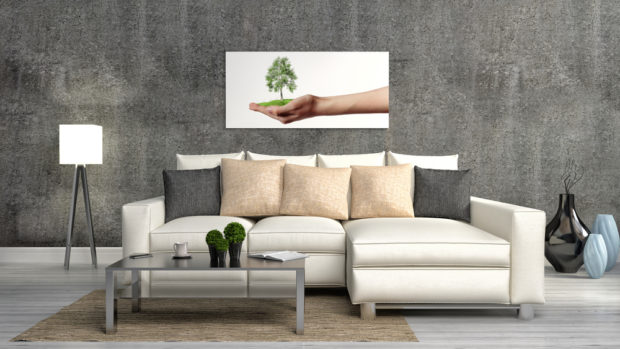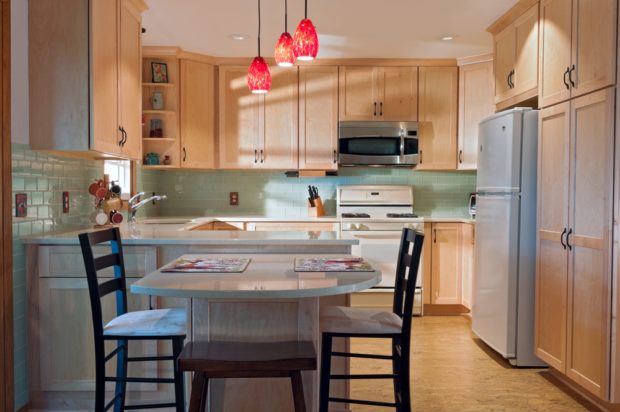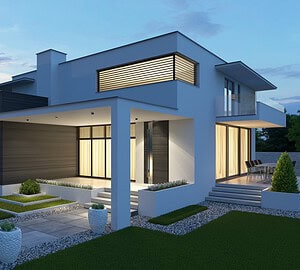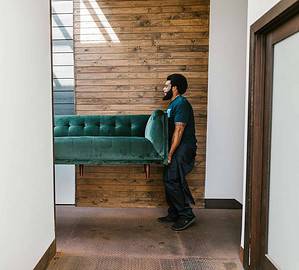Every professional working in the construction industry has a responsibility to work towards sustainability so that we can meet our current needs without compromising the ability of future generations to meet their needs. Furthermore, this responsibility applies as much to architects and engineers and other professionals as it does to interior designers.

It is an ongoing global challenge that isn’t easy or straightforward, but interior designers are in an exceptionally good place to instigate change, particularly with energy-efficient lighting and appliances, eco-friendly materials, materials with recycled content, sustainable wood, and low-energy and water-saving products. Many interior designers are involved in refurbishment, and playing a positive role in upgrading energy and water systems, and improving the thermal performance of the house, can make an enormous difference.
A detailed study of Sustainability in Interior Design by Siân Moxon, published in book form in 2012, looks at the design impact of sustainability and discusses a sustainable approach in detail, in the context of the unsustainable nature of construction.
Her take on refurbishment is eye-opening. For example:
- A study by the Athena Sustainable Materials Institute in Ottawa and Pennsylvania found that it is better to renovate buildings and improve their energy performance rather than demolish and rebuild them. The argument is that even if a new building is energy-efficient, it’s going to take a couple of decades to cancel out the effects of embodied energy used during construction.
- Refurbishing old 19th-century homes can reduce energy consumption by up to 80%. Although not a residential building, the Empire State Building in New York was to be refurbished to generate energy savings of around 38%. That’s massive!
- Since close to three-quarters of the buildings in existence at the time of her study were expected to survive until at least 2050, sustainable refurbishment was an indisputable necessity.
Sustainability and Good Design Go Hand-in-Hand
While many contemporary interior designers are not consciously aware of the importance of sustainable interior design, there is no doubt that it can be part of any inherently good design. In fact, there is considerable evidence that many iconic designers in previous centuries were responsible for sustainable design, even if it was inadvertent.
Today, a good knowledge of sustainable principles will influence a multitude of choices relating to materials, construction methods, energy choices, and water systems. Some of these will need the input of other professionals, for instance, a company that offers mechanical engineering services, or one that specializes in HVAC systems.
Nobody can deny that the construction industry has made (and continues to make) a massive impact ecologically, after all, buildings are responsible for more than half the carbon dioxide emissions in the world. A lot of these are the result of the way energy is used inside buildings, which is where interior designers can make a positive contribution.
While there are social and economic aspects that relate to interior design, it is the effect that it has on the environment that matters in this context. Even simple suggestions like recycling bins, spaces for drying washing (rather than tumble drying it), and secure bicycle storage can encourage clients to live a sustainable lifestyle. Limiting volatile organic compounds (VOCs) that are contained in paints and other products can also make a big difference to the environment.
In fact, even the smallest contribution from an interior designer is valuable.
But there is a problem. Sustainability and good interior design don’t always align with one another and not enough interior designers are incorporating a sustainable approach to what they do.
While architects and engineers (including those from New York architectural and Chicago engineering firms and related businesses in other big cities) are working on structures and systems that are intended to last a very long time, interior designers often focus on more short-term solutions and are happy to revisit their interiors as often as required. This inevitably leads to a significant amount of waste, which is not at all sustainable. Also, many interior designers like to specify exotic materials that are typically associated with the depletion of rare resources as well as high embodied energy during production.
Sustainable Interior Design Can Save Money
Sustainable interior design can be a challenge. It certainly is possible to save money either by cutting out some components that are not essential or by reducing maintenance needs or energy costs, but there are times when sustainable design is more expensive. For instance, some renewable energy systems like photovoltaic solar panels come with a higher capital cost, as do natural (vs VOC) paints. But often the long term benefits make a much greater impact in terms of savings and/or other benefits. An upfront investment in solar and other energy-efficient systems will usually cut running costs substantially. Eco-friendly paints will improve air quality and will have a positive impact on health.

Ultimately, there is often a need for compromise.
Sustainable interior design requires different, often complex, choices and there may be limitations. For instance, bamboo is one of the most highly regarded renewable resources that can be used for a wide range of finished materials including flooring, blinds, fencing, and even furniture, but unless it is grown locally, transportation will add to its embodied energy count.
Interior designers will also often work as part of a large project team, with consultants, architects, engineers, project managers and so on, and may not always have the final say on sustainable design choices. But it will always be possible to make some decisions that will minimize environmental impacts.
At the end of the day, as Siân Moxon says: “Sustainable thinking can simply become an integral part of their usual design approach, forming a routine consideration in good design practice.”



